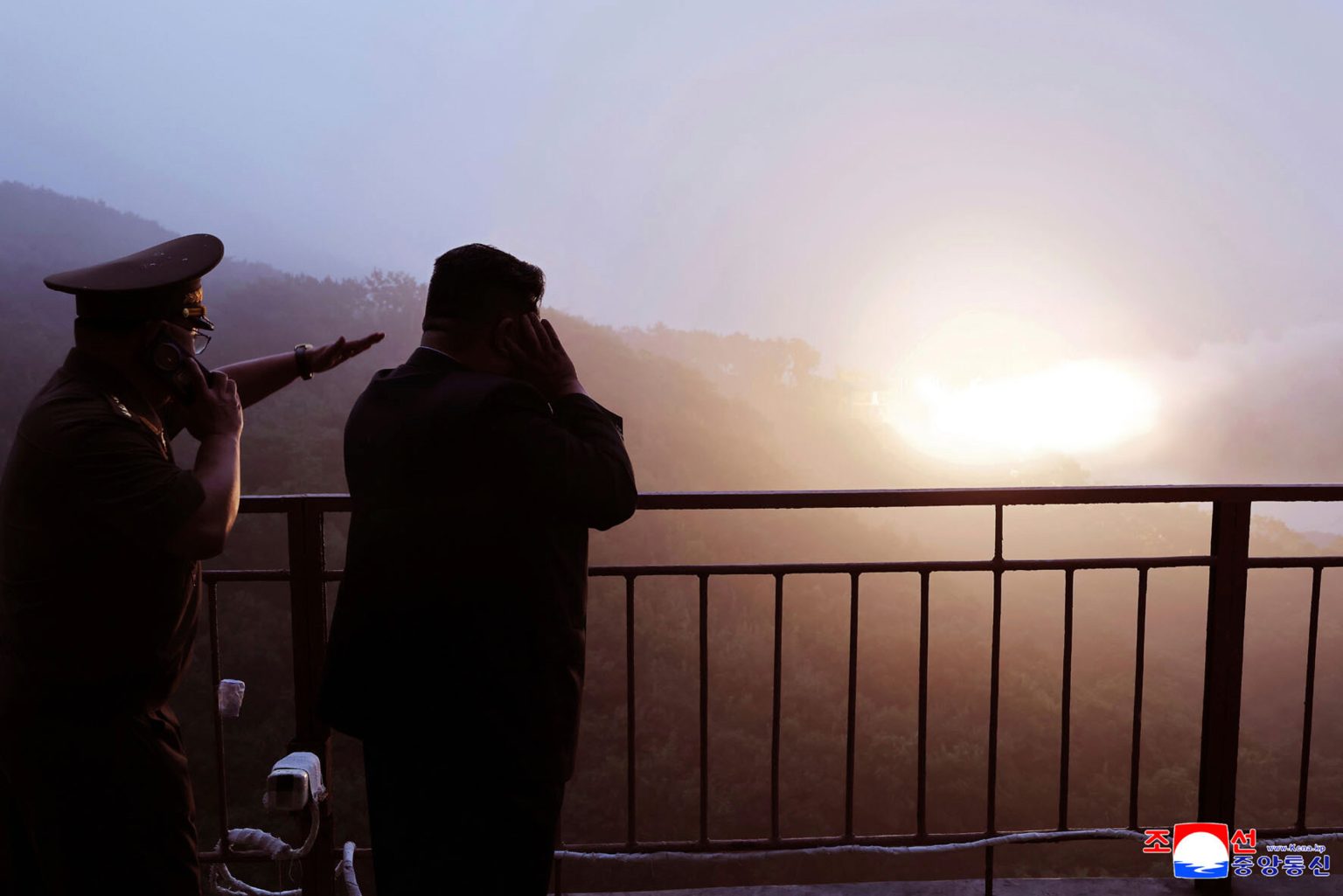North Korea’s Missile Advancements Signal Shifting Global Power Dynamics
In a significant development for North Korea’s military capabilities, Kim Jong Un has personally overseen the successful testing of a high-thrust solid-fuel missile engine constructed with composite carbon fiber material. This technological breakthrough, described as “eye-opening” by North Korean state media, represents a substantial advancement in the nation’s strategic nuclear arsenal. The test, conducted by the Missile Administration, produced an impressive 1,971 kilonewtons of thrust—markedly more powerful than previous models. This ninth test of a carbon fiber-built engine follows Kim’s visit to the research institute that developed the technology just a week prior, underscoring the regime’s commitment to enhancing its long-range ballistic missile capabilities despite extensive international sanctions and diplomatic isolation.
The timing of this test appears deliberately calculated, coming just days after Kim’s high-profile diplomatic mission to China where he participated in a military parade commemorating the end of World War II. During this visit, Kim met with Chinese leader Xi Jinping and Russian President Vladimir Putin, effectively cementing his position within an emerging bloc of nations opposed to what they collectively view as illegitimate American domination of international affairs. A South Korean Unification Ministry official noted this context, suggesting the test was specifically “aimed at the outside world, possibly a message toward the U.S.” This strategic messaging arrives as former U.S. President Donald Trump has indicated potential willingness to reengage with Kim, following their three previous meetings during Trump’s administration which ultimately failed to convince North Korea to abandon its nuclear program in exchange for sanctions relief.
The technical significance of solid-fuel missile engines cannot be overstated in terms of military readiness and strategic advantage. Unlike liquid-fuel alternatives, solid-fuel engines do not require fueling immediately before launch, enabling much quicker deployment during crisis situations. This characteristic makes such weapons easier to transport and conceal, providing North Korea with enhanced tactical flexibility. The propellants used in these systems combine fuel with oxidizer, frequently utilizing metallic powders such as aluminum as the primary fuel source. North Korea has already incorporated solid fuel technology into various shorter-range ballistic missiles and its newer Hwasong-18 intercontinental ballistic missile. According to state media reports, this latest engine will be integrated into future intercontinental ballistic missile systems, including one designated as Hwasong-20.
Since 2006, North Korea has conducted six underground nuclear tests, with the most recent occurring in 2017. Alongside these nuclear developments, the country has tested various intercontinental ballistic missiles, including some powered by solid propellants that experts believe could potentially reach the continental United States. This persistent advancement of nuclear and missile capabilities has significantly heightened tensions on the Korean Peninsula and throughout Northeast Asia. The ongoing weapons program has driven the United States and increasingly Japan to deepen their security cooperation in response to what they perceive as an escalating threat. For its part, North Korea maintains that these weapons developments are necessary defensive measures against what it characterizes as aggressive intentions from the United States and its regional allies.
The broader geopolitical context surrounding this missile engine test reflects North Korea’s strategic positioning within an evolving international order. Kim’s recent meetings with Xi and Putin highlight a consolidating alliance among nations seeking to challenge Western, particularly American, influence globally. This diplomatic maneuvering, coupled with continued technological advancements in weapons systems, demonstrates North Korea’s determination to enhance its position on the world stage despite economic hardships imposed by international sanctions. The United Nations has implemented numerous sanctions targeting North Korea’s weapons programs, yet these measures have failed to prevent the regime from developing increasingly sophisticated intermediate-range and intercontinental ballistic missile systems, including those purportedly capable of delivering nuclear warheads.
Looking ahead, North Korean state media reports that Kim has outlined “a series of important tasks and orientations” for the continued expansion and development of the country’s nuclear forces. This statement suggests that the regime intends to pursue further advancements in its weapons capabilities, potentially including additional tests of both missile systems and nuclear devices. Such developments would likely trigger further international condemnation and possibly additional sanctions, but North Korea appears undeterred in its pursuit of what it considers essential security guarantees. As global power dynamics continue to shift and realign, North Korea’s weapons program remains a critical factor in regional security calculations and international diplomatic efforts, presenting ongoing challenges for those seeking stability and denuclearization on the Korean Peninsula.


